Featured
A Lincoln moment
September 13, 2012
 In the early years of World War II, composer Aaron Copland was pressed into action, called upon to undertake a uniquely important duty to a nation in need. He was commissioned by conductor Andre Kostelanetz to write something that might inspire Americans as they battled forces bent on domination and destruction.
In the early years of World War II, composer Aaron Copland was pressed into action, called upon to undertake a uniquely important duty to a nation in need. He was commissioned by conductor Andre Kostelanetz to write something that might inspire Americans as they battled forces bent on domination and destruction.
At the heart of this composition would be the powerful words of a man who, nearly eight decades earlier, had guided our country through its darkest chapter when its very fabric was being ripped apart.
Copland, in his landmark work, turned to the speeches of Abraham Lincoln, interspersing excerpts with soaring orchestration. He called it “A Lincoln Portrait.” In a 1943 interview, Copland said his goal was to find passages that seemed relevant to the challenges at hand. Only once did he quote from a famous speech.
In the many years since then, the narrative of “A Lincoln Portrait” has been read by voices as diverse as America itself, including some of our finest actors, such as Gregory Peck, Paul Newman and Henry Fonda. On Tuesday, at the Hollywood Bowl, a Los Angeles County Supervisor with a long affection for Copland got his turn.
For me, the moment was especially meaningful because it fell on such a solemn date—September 11. And as in decades past, Lincoln’s words had transcended the years and circumstances of their day. Indeed, on the very night I appeared with the Los Angeles Philharmonic, our consulate in Libya and our embassy in Egypt had come under deadly assault.
For the entire text of “A Lincoln Portrait,” click here. Above, you can watch video highlights from the performance at The Bowl. But I’ll leave you with this resonant passage, which Copland drew from Lincoln’s annual message to Congress in December, 1862: “The dogmas of the past are inadequate to the stormy present. The occasion is piled high with difficulty and we must rise with the occasion. As our case is new, so must we think anew and act anew.”
Posted 9/13/12
A decision on my future
August 22, 2012
For many months, I’ve been wrestling with one of the most difficult decisions of my political life—whether to run for the office of Mayor of Los Angeles. I’ve been urged to enter next year’s race by friends, supporters and residents throughout the city. And I’ve been humbled and touched by the confidence they’ve placed in me.
I’m a lifelong resident of Los Angeles, a city facing serious challenges and opportunities. I have no doubt that, with my expertise and experience, I could help transform L.A.’s fortunes. In the end, however, it is this very length of service that has tipped the scales for me.
By the end of my current term on the Board of Supervisors in December, 2014, I will have served the people of the city and county of Los Angeles for nearly 40 eventful, productive and fulfilling years. Beginning as a 26 year-old councilman, I have quite literally come of age in public life at the forefront of Los Angeles’ most critical issues. While I have never been a supporter of term limits, I do believe that four decades is long enough for any citizen to hold elective office, especially in an executive capacity.
So I’ve made the decision to complete my current term on the board and then move on to the other things I’ve longed to do outside the political arena while I have plenty of productive years ahead of me. Simply put, it’s time for a new generation of leaders to emerge and guide this region into the future.
I want to thank the many people who have given me advice and encouragement during the period that I have weighed this decision. I deeply appreciate their patience and understanding. I also want to thank the voters who have elected me 11 times and given me the privilege of representing them. Above all, I’m eternally grateful to my family, which has encouraged me every step of the way while sacrificing so much.
Now, with that said, let me be clear: I’m not finished yet. I have more work to do and very little time in which to complete it. My dedicated staff and I will give our all during the next 27 months to get the job done. I look forward to working with you toward that end.
Posted 8/23/12
The final frontier
August 9, 2012

Hundreds gathered in Times Square to watch on an overhead screen the countdown to Curiosity's landing. Photo/Navid Baraty
Last Sunday, as Olympic crowds in London honored the world’s greatest athletes, Barbara and I were at the Jet Propulsion Laboratory in Pasadena, applauding the Curiosity’s touchdown on Mars. The euphoria was contagious. As beamed-back images of the Martian landscape flashed across the monitors above us, hundreds of JPL guests cheered and celebrated. NASA scientists high-fived each other. Engineers hugged.
The elation took me back 36 years to the last time I’d visited JPL, for another Mars mission. It was 1976 and an op-ed I had written about my lifelong admiration for space science had earned me an invitation to come witness the landing of the Viking 2. Compared to the hefty Curiosity probe, the Viking was a frail and rudimentary contraption; its arrival was hailed with a stream of numbers, not high-definition snapshots. But the joy and the sense of common purpose were as inspiring then as they are now.
The contribution space science has made to this region is easy to take for granted. So is the importance of places like JPL in our local economy. When someone mentions Southern California, most people don’t think immediately of rocket scientists and research institutions, and the aerospace industry is no longer the juggernaut here that it was in the Cold War era.
Still, both financially and culturally, science remains a powerful force here. From ear thermometers and earthquake mapping to historic missions like those of the space shuttle Endeavour, the technology and products of space exploration touch lives every day around the world and throughout our region. More than 5,000 Southern Californians work full-time at JPL and nearly 4,000 more are employed at the nearby campus of Caltech, which operates JPL for NASA; together, they are among the largest employers in the San Gabriel Valley, bringing in billions of dollars to the region in grants and business.
Critics may question the value of spending $2.5 billion in these challenging times on interplanetary exploration; it’s an important question. But so are the questions tackled by endeavors like the Curiosity. Is there life on other planets? Does the rest of the solar system hold clues to our fate? If Mars once had oceans, what happened to them, and what might that mean for you and me?
Back in 1976, as a young public servant operating in the unpredictable landscape of policy and persuasion, I envied the seeming straightforwardness of scientific research. Thirty-six years later, I still wish sometimes for just one human question that could be solved with an equation once and for all.
But at JPL on Sunday, it was hard not to be moved by a different aspect of science—its power to inspire us. Thousands of humans, from all over our world, had left their egos at that door in the name of a single, shared mission. Some had dedicated more than a decade of their lives to this one project.
I wondered what might happen if that kind of selflessness and teamwork were ever applied to the challenges we face here—ending homelessness, curing poverty, halting the climate change that one JPL scientist told me may have transformed Mars’s landscape. As Barbara and I walked to our car that night, I couldn’t help thinking about the all the common ground here on Earth that we still have left to explore and conquer.
Space may be an infinite mystery, but we, ourselves, are the final frontier.
Posted 8/9/12
Stay local, L.A.
August 2, 2012
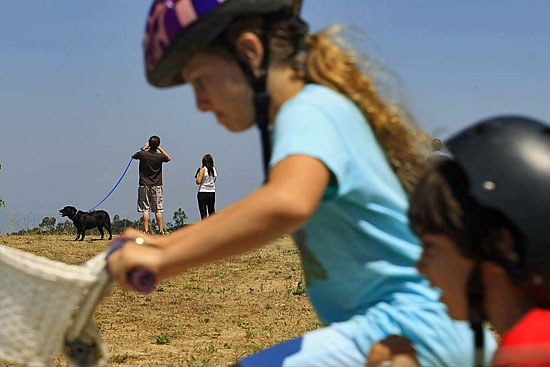
Ditch the car, hop on your bike and explore your neighborhood during Carmageddon II. Photo/L.A. Times
In the days after Carmageddon turned Los Angeles into a car-free Carmaheaven last summer, one of the comments I heard most often was: “Can you do this every month? We had a ball right in our own neighborhood.”
Unfortunately—or fortunately, depending on how you look at it—closing down the nation’s busiest freeway for an entire weekend isn’t something we do very often. But it is something we have to do one more time so that workers can demolish the north side of the Mulholland Bridge over the 405 Freeway in the course of 53 hours during the last weekend in September.
Carmageddon II, as we’re calling it, is an essential part of the project to modernize and add capacity to this heavily traveled stretch of freeway. And like the last time, this lengthy planned shutdown carries with it the potential for serious gridlock throughout the region if motorists ignore the warnings to steer clear of the area.
But it’s also an opportunity.
With so much going on around town and so many self-imposed pressures to stay constantly on the go, we rarely give ourselves permission to take the weekend off and savor the pleasures of simply hanging out in our own neighborhoods.
Los Angeles, consider this your permission slip. And while you’re at it, give your car the weekend off, too.
Your local business owners will thank you for it. Last summer, many of them took a hit during Carmageddon. This time around, there’s no reason to tank the local economy just to help make Carmageddon II a success. Local restaurants, shops and movie theaters are eager for your business. Whether you rediscover your neighborhood on foot, bike or public transportation, you’ll be doing them—and the rest of us—a big favor by staying close to home.
This isn’t just some feel-good exercise. It’s essential to getting through another potential traffic mess just as successfully as we did the last time. After all, the 405 is part of a massive, interconnected system. Its connecting freeways, the 10 and the 101, have plenty of their own heavy traffic to contend with at the best of times, and are also likely to feel the impact if motorists decide to tempt fate and venture out onto local roadways during Carmageddon II.
The good news is that Los Angeles drivers are as savvy as they come. Last summer, a healthy measure of fear, public spiritedness and enlightened self-interest kept most people off the roads during Carmageddon. A team of experts from UCLA and Rand analyzed the data and found traffic was down in some areas by more than 70%, compared to a typical summer weekend.
There’s no reason to think we can’t do that again. In fact, there’s more reason than ever for all of us to do our part.
Construction crews will once again be battling the clock, only this time they will have one-third more work to do in the same amount of time. Last year, they were able to finish early. This year, they’re likely to need all the time available—from the first lane closures at 7 p.m. on Friday, September 28 until the freeway reopens at 6 a.m. on Monday, October 1. For these workers, the pressure is on, big time.
For the rest of us, there’s another kind of pressure: to live up to our past Carmageddon success without getting complacent.
But the rewards are many. So please, mark your calendar and start planning to spend the last weekend of September eating, shopping and playing close to home. See you around the neighborhood.
Posted 8/2/12
A Universal win-win
July 17, 2012
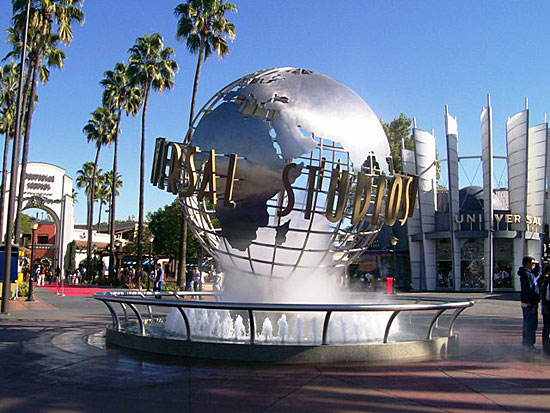 Back in the 1950s and ‘60s, Los Angeles watched as 20th Century Fox Studios’ massive backlot was gobbled up by the development that eventually turned into Century City.
Back in the 1950s and ‘60s, Los Angeles watched as 20th Century Fox Studios’ massive backlot was gobbled up by the development that eventually turned into Century City.
By now we’re all familiar with that growth and the congestion that followed. Less visible to the public at large was the virtual disappearance of one of Hollywood’s most essential resources: the backlots and production facilities underpinning our hometown industry.
When I was first elected to the Los Angeles City Council, representing Century City, among other communities, I often thought about the loss of the Fox backlot, and all of the jobs and history that went with it.
In recent months, we’ve found ourselves in precisely the same situation. NBCUniversal, one of the last studios in town that actually has a huge working backlot, was proposing to spin off a good chunk of that valuable and historic acreage to build nearly 3,000 apartments and condos.
It’s something I’ve opposed from the start.
Putting thousands of new residents right on the often-noisy frontlines of entertainment production makes no sense. Not only does it detract from Universal’s core mission, it also makes it all but inevitable that the new residents’ complaints about the noise and distractions of making movies and TV would eventually derail that part of the business altogether.
That’s not an insignificant loss to our shared culture and economy. After all, you can build residential units just about anywhere, but once you eliminate a studio backlot, it’s gone forever. And so are the jobs it supported.
Universal’s Evolution Plan, a 20-year guide to the future of the world-famous studio and theme park property, was originally drawn up when the company was still owned by General Electric. Now it has a new majority owner, Comcast, a media giant in its own right. It seems to me that this company is not in this for the quick buck; they’re in it for the long haul.
So in January, I appealed to Universal president Ron Meyer to drop the housing component of the plan. Eliminating a major section of the backlot, I said, would chase away much-needed entertainment jobs from the immediate area and likely hurt his company and our regional economy along with it. Others, including City Councilman Tom LaBonge and many members of the community, added their voices to the opposition.
This week, we had a breakthrough. After receiving numerous public comments and seeing the results of the environmental review, NBCUniversal scrapped its residential building plans. Instead of a quick real estate play, the studio is looking to enhance its core entertainment business, creating potentially more than 30,000 jobs while expanding its production facilities and revamping theme park attractions.
If you’re the grip, tour guide or construction worker who’ll be getting one of those jobs today or in the future, that’s great news. It’s also great news for the broader entertainment industry, which increasingly is turning to Universal as one of the few large-scale production facilities left in town. Building condos would have led to some construction jobs, yes, but those jobs would have disappeared when the last nails were hammered. Entertainment industry production jobs will continue as long as this town still makes movies and TV shows.
But that work can’t exist unless there’s a workplace to go to. And sad to say, studio backlot space is an endangered species these days in Los Angeles. While it might sound strange to an outsider, in our town these are industrial lands devoted to producing to an internationally sought-after product, and it’s vital that we protect them for this creative and economic purpose. Universal’s plan as it stands now does this.
There’s still a long road ahead, as the Evolution Plan moves from the final environmental report phase into a series of public hearings and official reviews that will be required before the first shovels break ground. Neighborhood input has been essential so far, and community voices will continue to be heard as the process moves forward.
It’s important to take a moment now, though, and acknowledge those who’ve realized that taking the long view isn’t just the right thing to do—it’s also good for business.
To his credit, Universal’s Ron Meyer and studio owner Comcast were willing to listen—and courageous enough to ask for a rewrite.
The resulting breakthrough gives our hometown—and our hometown industry—a chance to grow and thrive. This time around, unlike decades ago, the studio, local leaders and the community are taking the long view, and that’s good for all of us.
Posted 7/17/12
Upholding rights—and health
June 28, 2012
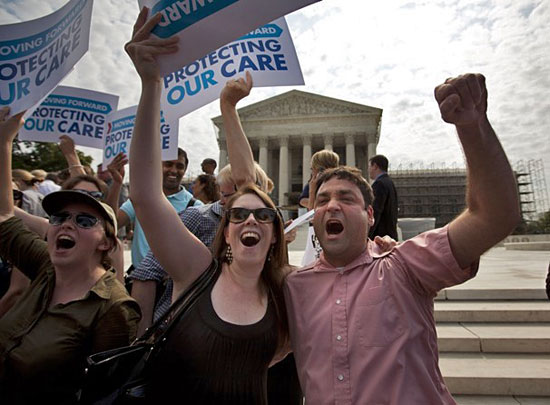
Cheers erupted at the Supreme Court after the justices released their ruling upholding the healthcare act.
The U.S. Supreme Court today issued a ruling that will rank among its most historic—a decision that, like those others, will echo through the decades because it’s about more than the letter of the law. It’s about essential human rights and decency.
The high court’s decision to uphold the Affordable Care Act will, quite literally, save lives—both from illness and the financial ruin that can often follow. The court’s ruling is a resounding affirmation that access to affordable, quality health care isn’t a privilege, but a right.
The impact of the Supreme Court’s ruling will be felt more profoundly here in Los Angeles County than almost anywhere in the nation.
More than 2 million of our fellow residents have no health insurance, a gaping hole in the safety net that unfairly affects the quality of their lives and the lives of those around them. Our schools, streets and workplaces are less healthy when fewer of us can afford health care. And when our strained public hospitals and clinics fill with the indigent and uninsured, the tax burden falls on the rest of us.
That’s why, for the past two years, Los Angles County has worked so hard to prepare for the federal heath care law, which according to a UCLA analysis, would provide access to coverage for some 80% of the county’s uninsured population when it goes into full effect in 2014.
One provision promises to provide 750,000 county residents with access to insurance through a new state exchange that was upheld by the court’s action on Thursday. Another, allowing states to expand Medicaid access (or Medi-Cal, as we call it in California), would provide coverage to more than 1 million county residents. Although the Supreme Court gave states the right to opt out of that expansion, I would hope that our state leaders would seize the moment and take advantage of this opportunity to protect our greatest asset—the people of California.
Already, Los Angeles County’s Department of Health Services has enrolled some 200,000 low-income county residents into Healthy Way L.A., the Medi-Cal-like program we’ve created, with support from the federal government, as a bridge to the new law. Beginning January 1, 2014, the federal government will underwrite 100 percent of the costs of that program for several years, eventually dropping to 90 percent.
For us, the Affordable Care Act also is about more than future results. As a result of the law, tens of millions of dollars in federal funds already have begun flowing to local community clinics and to grants for anti-obesity and anti-tobacco initiatives, such as Choose Health L.A. These crucial undertakings are no longer at risk, thanks to the Supreme Court decision.
The law, of course, will not instantly fix a problem so entrenched in our society. Some low-income residents will choose not to purchase insurance through the state exchanges. Others will be ineligible for public programs because of their citizenship status. Thus, the county—and its clinics and hospitals—will remain crucial to hundreds of thousands of people.
What’s more, while the legalities may now be settled, the politics of health care reform clearly are far from over in this election year. However, at the end of the day the court’s decision puts people first. We are the only industrialized nation that does not insure all of its citizens, and it’s high time we remove that blemish. As we move forward, I hope we can look beyond the partisanship and remember that this debate is not about blue and red, but about life and death.
Posted 6/28/12
A heartfelt thanks to Ginny
June 14, 2012
For this week’s blog, I’m going to take a break from the usual policy discussion to share some personal thoughts about someone very close to me who is retiring from my office. It’s never easy to say goodbye, but this departure is especially difficult.
Ginny Kruger joined my City Council staff in 1977, barely two years after I was first elected at the age of 26. And now, after 35 years–throughout nearly my entire career in public life–she is taking a well-earned retirement to spend more time with her family (including her wonderful grandchildren) and to indulge her wanderlust and her passion for culture and the arts.
So let me take this opportunity to acknowledge with gratitude the invaluable assistance I’ve had from Ginny over the years. She has been much more than a loyal staff member, trusted adviser and close personal friend. A more ardent and dedicated champion of the arts and preservation of the environment will not be found anywhere. Ginny has advised me, represented me and advocated for me on arts matters since I first assumed county office in 1994. She has had a guiding hand in virtually every major policy and financial aspect of arts policy and arts-related capital projects during my entire tenure.
For many years, Ginny also superbly managed one of the most challenging policy portfolios of any deputy in the Fifth Council District or Third Supervisorial District: planning, development and land use. Additionally, when I was elected as a county supervisor and assumed responsibility for the Santa Monica Mountains, she quarterbacked all of our efforts on the acquisition and preservation of precious open space.
Ginny played a key role in working out the complex logistics that have allowed our state and federal parks agencies to save literally thousands of acres of irreplaceable coastal and mountain properties to protect natural habitats and preserve those lands for the enjoyment and appreciation of future generations. Without her expert knowledge and tireless dedication, I hate to think how much would otherwise have been lost.
As a steward of the arts, and our arts institutions, she is without peer. Walt Disney Concert Hall, the renovations at the John Anson Ford Amphitheatre, the major improvements at the Hollywood Bowl (including replacement of its iconic shell with a stylish, state-of-the-art update), the extensive improvements throughout the Los Angeles County Museum of Art campus–all these owe a great deal to Ginny’s passionate and tireless dedication.
I wish her the very best for a healthy, happy and fulfilling retirement. And though she will remain involved as my representative on several public commissions, we will deeply miss her dedicated work on a daily basis on behalf of so many worthy causes we cherish so much. Thanks for everything, Ginny – and let this not be farewell, but au revoir!
Posted 6/14/12
It pays to grow Project 50
June 7, 2012

Jacques Walker, an original Project 50 client, in the rooftop garden of Skid Row Housing Trust’s Cobb Apartments.
When we first launched Project 50, targeting the most vulnerable homeless residents on Skid Row for housing, medical care, mental health and other critically important services, we knew it was the right thing to do.
What we didn’t know for sure was whether this pilot project would pencil out in Los Angeles—as it has elsewhere—as a financially smart way to cut the incredibly high costs associated with chronic, long-term homelessness.
Now we know.
A new report assessing the cost-effectiveness of Project 50 is in, and the results offer powerful support for the economic benefits of doing the right thing by some of the people our society has shamefully left by the wayside for far too long.
The study, by the county’s Chief Executive Office, found that Project 50 in its first two years actually saved more money than it spent—with $3.045 million invested in the program resulting in savings of $3.284 million. Put another way, each permanent supportive housing unit we provided over those two years saved the taxpayers $4,774.
Even for Project 50’s most committed supporters like me, those are some mighty impressive numbers.
Yes, we spent more money on mental health care and substance abuse treatment for Project 50 participants—but we saved even larger amounts than we would have spent incarcerating them or caring for them in our clinics and emergency rooms if their conditions had gone untreated.
What’s even more intriguing is how Project 50 participants’ mental health care costs stacked up compared to those of a similar group of homeless people not in the program. Both groups had rising mental health care costs after Project 50 started—but the Project 50 group’s care cost significantly less. That’s because they received mental health outpatient care, unlike members of the comparison group, who needed far costlier hospital and emergency room crisis treatment.
Since our goal in launching this project in 2008 was to move the most hard-core homeless people off the streets, while supporting them with services to combat their substance abuse and mental health demons, these data provide vindication for the “housing-first” approach.
If we can meet people where they are—not where we wish they were, in terms of drug and alcohol abuse—we can make a profound difference, not just in their lives but in the county’s bottom line.
Since Project 50 began, we and our coalition of partner agencies have expanded the concept beyond Skid Row to reach chronically homeless people in Hollywood, Santa Monica, Venice and Van Nuys. We’ve also launched Project 60, which serves chronically homeless veterans.
In all, nearly 600 lives have been touched by this remarkable program.
This new assessment of Project 50’s cost-effectiveness shows that it’s time to think even bigger. I believe we can set our sights on reaching all of the approximately 11,000 chronically homeless individuals who sleep on our county’s streets each night.
Taking a “housing first” approach with each of them is the right thing to do—and it turns out to be a great investment, too.
Read the Los Angeles Times’ report on the new study here.
Posted 6/6/12
Orange Line, golden age
May 29, 2012
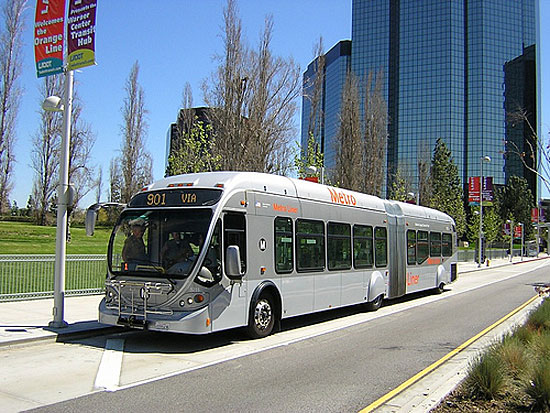
Starting June 30, the Orange Line Extension rolls northward as part of the county's public transit boom.
Sometimes it’s hard to spot a great leap forward when you’re sitting in bumper-to-bumper traffic.
But that’s what we’re living through these days in L.A. County.
Our public transportation system, a national laughingstock just a generation ago, is on a roll. I don’t think it’s an overstatement to say we’ve entered a golden age of public mass transit. I’m not arguing that our notorious traffic congestion is likely to disappear anytime soon; as long as our population keeps growing and 16-year-olds continue to head down to the DMV to get their first driver’s licenses, that’s going to be a fact of L.A. life. But we’re finally in a position to offer the traveling public some meaningful alternatives to sitting and stewing on our freeways and surface streets.
The Orange Line Extension is the latest case in point. This rapid transit bus line opens to the public on Saturday, June 30, with free rides and festivities. Its four-mile route, which runs from Warner Center to the Metrolink train station in Chatsworth, is a northward extension of the original Orange Line, which opened in 2005 to rave reviews and significantly higher-than-projected ridership. (It now stands at more than 25,000 boardings a day.)
The Orange Line Extension—which is coming in under budget and ahead of schedule—promises to continue that success story, offering thousands of new riders not just a better commute but a better quality of life.
As important as this project is to bringing transportation alternatives to our traffic-jammed region, it’s only a small part of what’s now happening across Los Angeles County. Look in just about any direction, and you’ll see signs of a transit revolution.
The long-held dream of building a Westside Subway moved into high gear last week as Metro’s Board of Directors voted to approve the project’s route, placing it on track to break ground as early as 2013.
Meanwhile, the Westside’s first light rail since the Red Car is now open for business. The Expo Line started carrying passengers between downtown and La Cienega in April, and will be reaching Culver City later this summer. Work also has begun on Expo’s second phase, which will extend the line all the way to Santa Monica.
On the other side of the county, the eastward expansion of the Gold Line is underway, with a dramatic bridge taking form across the 210 Freeway as the light rail rolls ahead toward Azusa. And projects ranging from the Crenshaw/LAX Line to the Regional Connector are moving closer to becoming a reality.
These projects—many of them made possible by county voters’ overwhelming approval of Measure R in 2008—are about so much more than moving us from Point A to Point B. Every time we build a mass transit alternative, we return precious time to the daily lives of real people. We restore choice to commuters who have been held hostage to the freeways. And we move our region toward a healthier, less car-dependent future.
I encourage you to hop onboard the Orange Line Extension when it opens June 30. And be sure to take a photo. You can say you were there as L.A. was making its move from public transportation punch line to public transportation powerhouse.
Posted 5/29/12




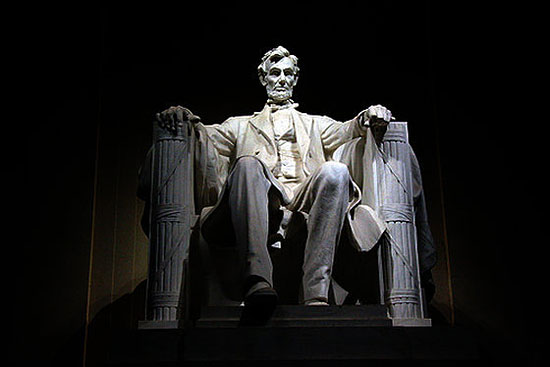
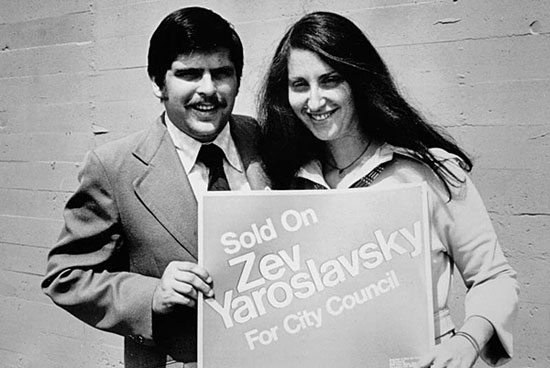
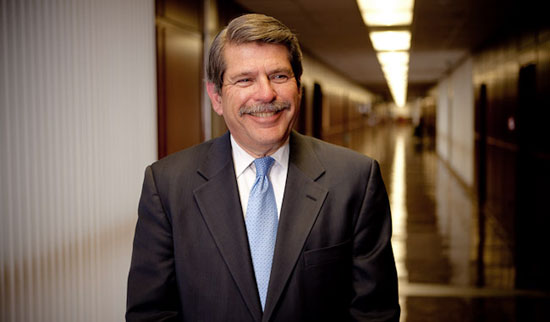
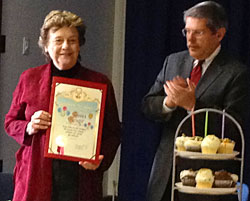





 Check for the latest closure information
Check for the latest closure information








